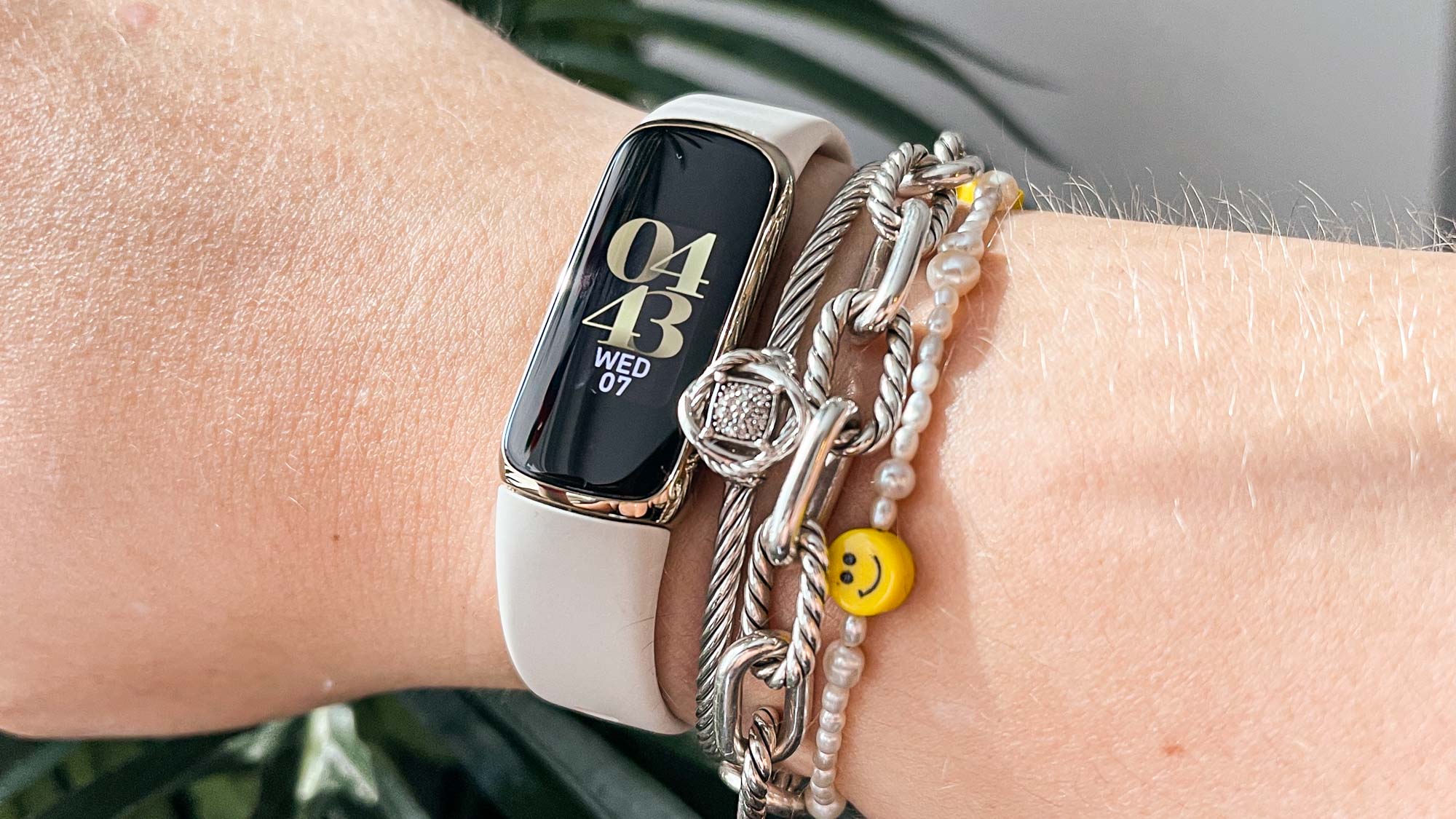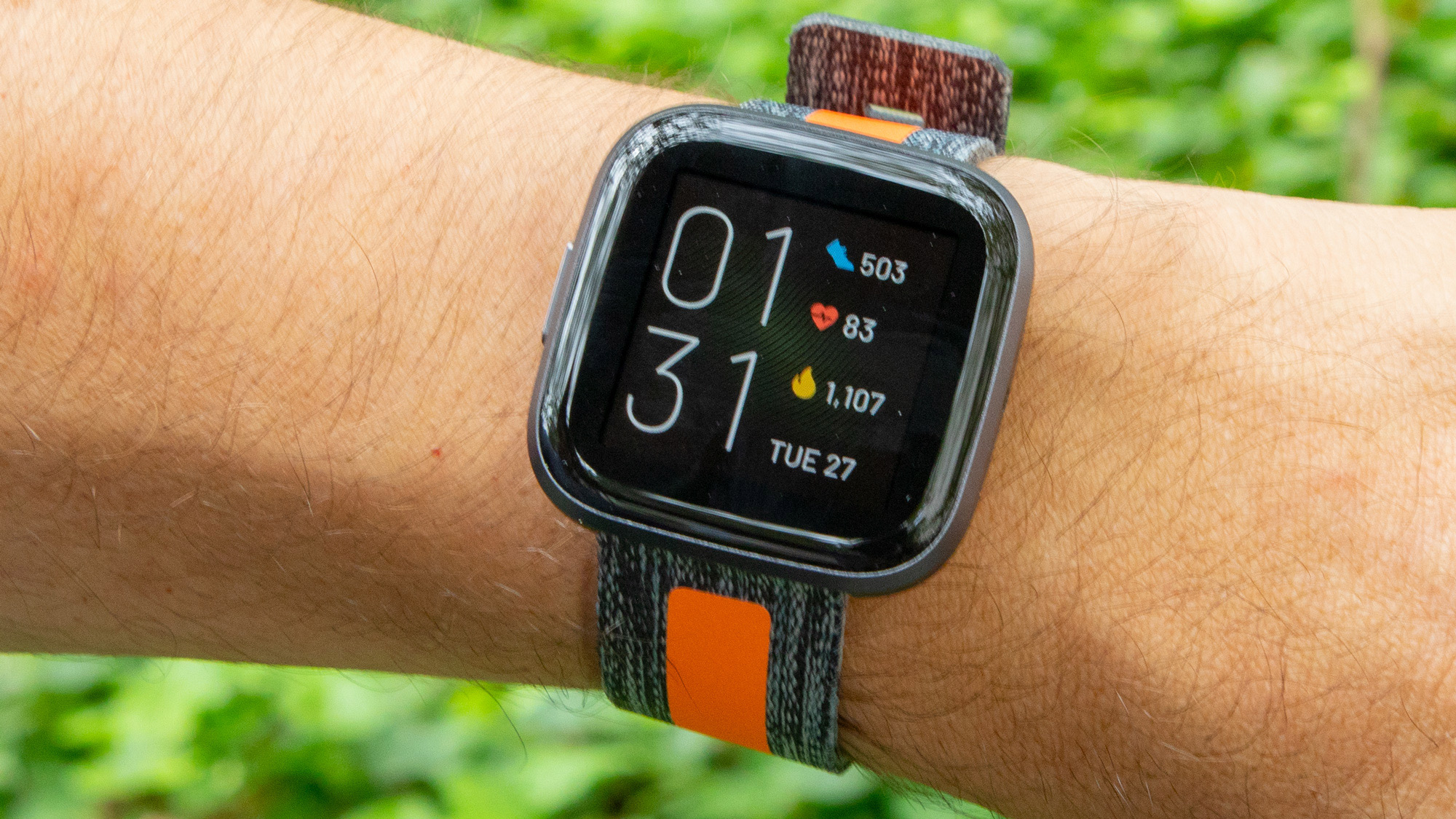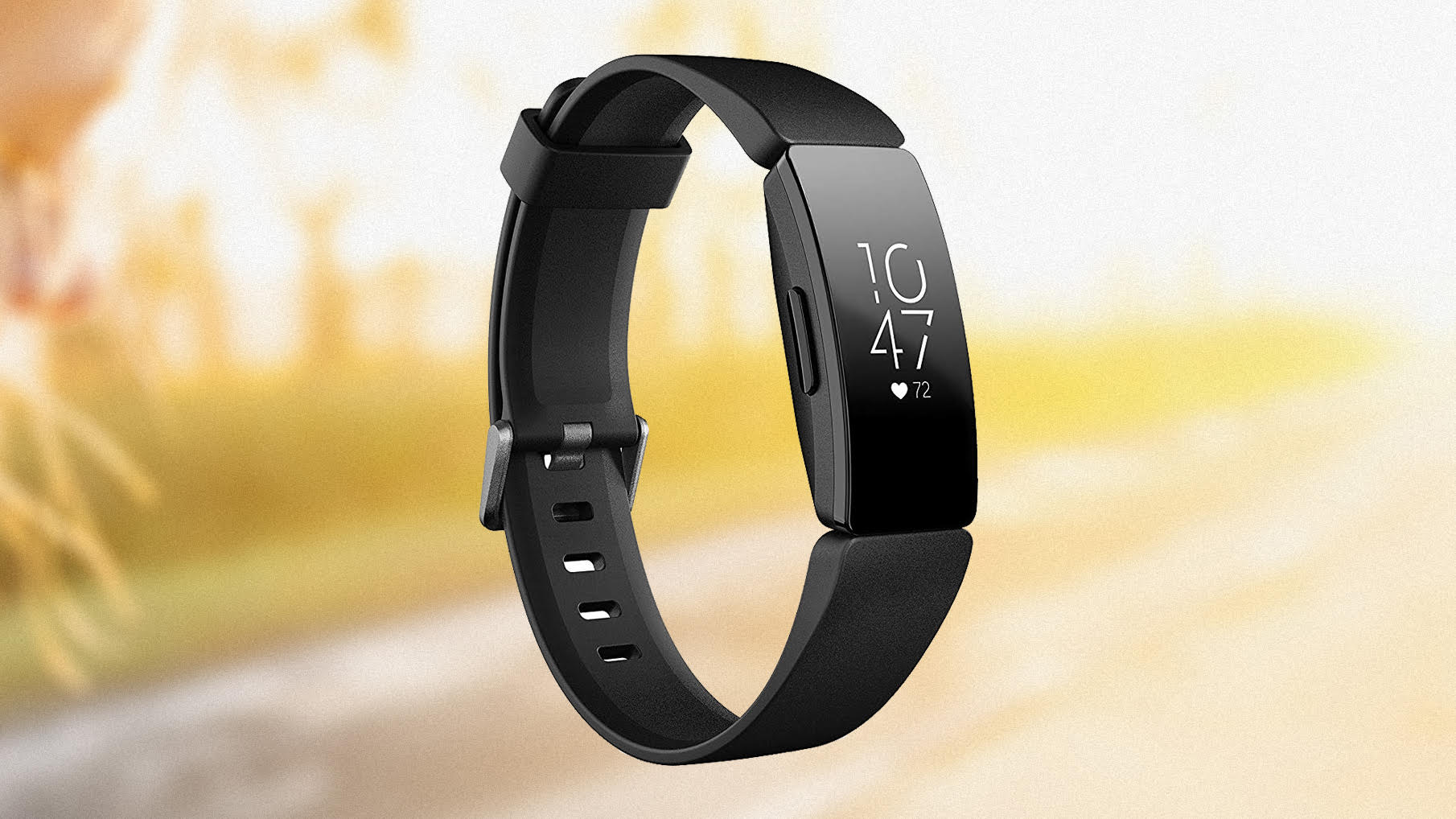Best Fitbit in 2021: Choose the right fitness tracker
Choosing the best Fitbit for you all depends upon your needs and budget. Fitbit’s devices are some of the best fitness trackers you can buy, but range from the $70 Fitbit Inspire to the $329 Fitbit Sense, so it’s important to know what you’re looking for.
All of Fitbit’s devices automatically track activities, steps, and sleep. They’re all water-resistant, come with female health-tracking, and all can receive notifications from your smartphone. And all of them also connect with Fitbit’s excellent app, as well as connect to a huge community of other Fitbit users, whom you can challenge to reach fitness goals.
Some Fitbits have characteristics of the best smartwatches, including advanced features, such as heart rate monitoring, mobile payments, access to an app store, color displays, even built-in GPS and on-screen workouts. Our roundup of the best Fitbit deals right now can help you score the one you want at a discount, too.
See all of the best Fitbits below.
What is the best Fitbit?
After running, biking — and sweating — with the company’s devices, we think the best Fitbit overall is the Fitbit Sense. It’s the most impressive Fitbit yet, merging top-shelf smartwatch features (including FDA-approved ECG readings and a stress management tool) with the fitness tracking you love about this brand.
The Fitbit Charge 4 is a great choice as well. In addition the GPS, the Fitbit Charge 4 has a number of other important features, including a new fitness metric called Active Zone Minutes. According to a number of major health organizations, you need to get your heart really pumping for at least 150 minutes each week. The Charge 4 is designed to keep track of that, and let you know when you need to get out more.
The Fitbit Charge 4 is a slim device that has a grayscale OLED touchscreen that displays your heart rate, steps, stairs, sleep, and more. You can swap out the bands on the Charge 4 to customize the look of your device, too. The Charge 4 is also water resistant to 50 meters, and can track laps in a pool. If you’re looking for more information on whether a Fitbit is water resistant, see our guide on is Fitbit waterproof?
The best Fitbits you can buy today
The Fitbit Sense is the company’s premium smartwatch that comes with more advanced health and wellness features that the Versa line. Not only does it have an FDA-approved ECG sensor and blood oxygen reading, but the Sense has the ability to measure electrodermal activity and skin temperature, too.
As one of the best Fitbits, best smartwatches and a winner of a 2021 Tom’s Guide Award for Health and Fitness, the Sense works with both iOS and Android, and comes with on-board GPS, a native app store, Alexa and more. No longer is Fitbit just a brand with products for tracking our steps: Fitbit devices like the Fitbit Sense show what it means to take a holistic look at our health.
Read our full Fitbit Sense review.

Not only does the Fitbit Charge 4 have GPS built in — a first for Fitbit’s fitness trackers — but it has a new metric, called Active Zone Minutes, that give you a better indicator of your overall health. The Fitbit Charge 4 also has Fitbit Pay, so you can use it as a contactless payment device at participating locations. And, for those who use Spotify, the Charge 4 now has controls for that music service, though you still can’t load music onto the device itself.
The Charge 4 was comfortable to wear, and its GPS was accurate when we took it on runs. It’s also pretty good at measuring sleep, and thanks to its SPO2 sensor, is able to warn you if you’re at risk for conditions such as sleep apnea. The Charge 4 will last up to 7 days, but that number drops to 5 hours when using GPS. That’s not as good as the best GPS watches, but good for a fitness tracker. Our Apple Watch 3 vs. Fitbit Charge 4 face-off explains why it’s the most capable fitness trackers you can get for the price.
Read our full Fitbit Charge 4 review.

If you’re new to fitness tracking, the $99 Fitbit Inspire 2 is the ultimate entry-level activity band and the best Fitbit for you. For a third of the cost of the company’s smartwatches, the Inspire 2 gets basic health metrics, automatic workout tracking and accurate sleep insights. It also comes with a free year of Fitbit Premium.
Fitbit rates the Inspire 2 battery life for 10 days, which makes it the longest-lasting Fitbit. There’s no GPS or music storage, so you’ll need your phone nearby for working out. But it does have Active Zone Minutes, which is a feature on Fitbit’s pricier options that monitors the time you spend in the fat burn, cardio or peak heart-rate zones while exercising.
Read our full Fitbit Inspire 2 review.

The Fitbit Charge 3 was previously our top pick as the best Fitbit, but it’s been supplanted by the Fitbit Charge 4, which has GPS and a few other features. But that doesn’t mean the Charge 3 still isn’t a good device, and it’s now $30 less than the Charge 4.
Designed for those who want to keep healthy and stay in shape, but aren’t going to be running marathons, the Charge 3 has a fairly large, grayscale touchscreen display that shows your heart rate, distance traveled, and notifications from your smartphone, if connected. The Charge 3 is also swim-proof, and can track your laps in the pool.
The Charge 3 comes in three sizes, so it should fit most wrists (Fitbit has a sizing chart on its site). In addition, the Charge 3’s strap is removable and Fitbit, as well a a number of third parties makes straps in different colors, patterns, and materials. The Fitbit Charge 3 also has an SpO2 sensor that will be used to diagnose breathing disturbances while sleeping and week-long battery life. It still requires a smartphone to connect to GPS, but it’s still a good Fitbit for the money — while supplies last.
Read our full Fitbit Charge 3 review.

The best Fitbit midrange smartwatch is the Fitbit Versa 3, the next-generation of the Fitbit Versa 2. The Versa 3’s standout upgrade is on-board GPS. Now, even when you leave your phone at home, the Versa can (finally) track your location during outdoor exercise. A curvier, larger display is welcome, too.
Plus the Versa 3 has gained a great motivational workout feature, Active Zone Minutes. Introduced with the Charge 4, Active Zone Minutes monitors the time you spend in the fat burn, cardio or peak heart-rate zones while exercising. Your goal is to earn the AHA’s and WHO’s recommended 150 Active Zone Minutes each week.
Read our full Fitbit Versa 3 review.

The $150 Fitbit Luxe looks to make fitness tracking a fashion statement. While we’ve seen smartwatches offer lifestyle models as alternatives to their sporty counterparts, the Fitbit Luxe is the first activity band we’ve seen in a long while that’ll pass as wrist candy.
Unlike some of the best Fitbit models, the Fitbit Luxe introduces elevated, jewelry-inspired elements with a color touchscreen and stainless steel casing with metallic finishes. It looks even better paired with a “special edition” link bracelet from Fitbit’s partner designer brand. We wish it offered GPS and contactless payments for the price, but it’s still the most attractive fitness tracker we’ve seen in a while.
Read our full Fitbit Luxe review.

If you’ve ever wanted Alexa on your wrist, the Fitbit Versa 2 is the best Fitbit for you. This second-generation Versa has Amazon’s assistant built in, which lets you do such things as control smart home devices, look up the weather and news, and a lot more.
It comes with advanced sleep-tracking features, which, when combined with the Versa 2’s ability to monitor blood oxygen saturation levels, could help alert you to conditions such as sleep apnea. You can also download up to 300 songs to the Versa 2 itself, as well as from Pandora and Deezer, so you can leave your phone at home if you want to listen to some tunes. Sadly, the Versa 2 lacks on-board GPS, so you will need to tote your phone if you want that feature. Check out our Fitbit Versa 2 vs. Fitbit Charge 4 face-off for more on the advantages and disadvantages to the brand’s smartwatch, as well as everything we know about its possible predecessor, the Fitbit Versa 3.
Read our full Fitbit Versa 2 review

With built-in GPS as well as a large, colorful touchscreen, the Fitbit Ionic is the best Fitbit for those who want a device with all the bells and whistles. The Ionic is the only one of Fitbit’s devices with GPS, onboard music storage, and mobile payments, making this truly a device that lets you leave your smartphone at home when you want to go out and exercise.
The Ionic also supports Fitbit’s small app store, which lets you add such things as Starbucks and additional watchfaces. Plus, the Ionic’s display can also show on-screen workouts, handy for those times when you don’t want to have to look at another screen to know if you’re doing your yoga poses correctly. Our biggest criticism of the Ionic is its design; it looks more like a first-generation smartwatch than a fully capable fitness tracker, and its size makes it bulky on smaller wrists.
Read our full Fitbit Ionic review

The Versa Lite looks like the Versa 2, but Fitbit stripped out a number of features to bring the Lite’s price down about $50 less than the more premium model. Like the Versa 2, the Versa Lite has a rounded circle shape with a bright and colorful touchscreen. And, because this is a “smartwatch,” you can also download apps to the watch from Fitbit’s meager selection.
Health-wise, you get standard Fitbit fare including accurate sleep and fitness tracking, a nice set of customizable bands, automatic workout recognition, and music controls on your wrist. What you don’t get, though, is the ability to store music on the Versa Lite itself. Nor are their on-screen workouts, nor swim lap tracking. And, like most Fitbits, the Versa Lite doesn’t have on-board GPS; you’ll need to connect to your phone for that.
Read our full Fitbit Versa Lite review

Yes, the Fitbit Inspire is the company’s least-expensive fitness tracker, but what you save — about $30 over the Inspire HR — isn’t worth what you give up. As you might guess from its name, the Fitbit Inspire lacks a heart rate monitor, which by now should be a requirement for any fitness tracker.
And while the Inspire doesn’t have GPS, you can’t even use your smartphone’s GPS in conjunction with the Inspire, as you can with every other Fitbit. One thing that the Inspire has going for it is its 7-day battery life—not surprising given that it doesn’t have to power a number of sensors. You can get smartphone notifications and swim tracking, but the Inspire also lacks sleep tracking. Between that and not having a heart rate monitor, this is one fitness tracker to avoid.

The Fitbit Alta HR is a sensible update to the original Alta, with heart rate monitoring and better sleep tracking, in an equally slim and stylish package. It was once higher up on this list of the best Fitbits, but has since been replaced by the Fitbit Inspire HR. We’d recommend the Inspire HR over the Alta HR, but if you can find the Alta at a discount (or under $100) it’s still a worthy device.
In addition to tracking your steps and actively monitoring your heart rate, the Alta HR can automatically recognize and track running, outdoor biking, elliptical workouts and aerobic workouts. It’s not swim-proof, but you can wear it to bed for sleep tracking for at least 6 nights in a row before it needs to charge.
Read our full Fitbit Alta HR review.

The Fitbit Ace 3 is one of the few fitness trackers designed for kids. Like Garmin’s Vivofit Jr. models, the Fitbit Ace 3 offers parental controls for their children (8 and up) and helps set health goals in a way that’s appropriate for little ones. Unlike the fitness bands Fitbit makes for grown-ups, kids won’t be able to see metrics such as calorie burn or body fat percentage on the device or in the Fitbit app. Rather, the Fitbit Ace 2 offers achievements and trophies that can be unlocked by activity.
Fitbit Ace is designed to encourage kids to get up and move instead of sit in front of a TV. Colorful band options add a fun flair, while the game-based goals are certain to grab your kid’s attention.
How to choose the best Fitbit for you
If you spend more time than you wish to disclose on your butt watching TV, and want to start down the path to a healthier lifestyle, a basic tracker that costs less than $100 will most likely suit your needs.
The $99 Fitbit Inspire 2 will track your daily steps, calories and distance, showing your stats on a small OLED touchscreen.
For those who work out more frequently, the Fitbit Charge 4 might better suit your needs. This band has all of the same features as the Inspire HR, but comes with a larger OLED touchscreen display, which makes it easier to see notifications and health data at a glance. It also has NFC built in, so you can use it for mobile payments via Fitbit Pay.
Those looking for more of a smartwatch-style fitness tracker should check out the Fitbit Versa 3 or Fitbit Sense. These devices have square, color touchscreens that can be used with Fitbit’s small but growing app store.
How we test Fitbits
By wearing them, of course! When Fitbit comes out with a new fitness tracker or smartwatch, we fully charge it up, then strap it on our wrist for about a week or so to test out all its features.
First and foremost: How does it feel? Some fitness trackers are pretty bulky, which means they won’t fit comfortably on smaller wrists. Next, we look at its fitness features, such as its heart rate monitor and, where applicable, its GPS. How accurate are both sensors?
We also look at the other features of the Fitbit, including sleep tracking, female health tracking, mobile payments, and smartphone notifications.
We also look at Fitbit’s battery life claims, and compare it to our actual use. Some sensors chew up juice faster than others, so if you’ve got the screen on constantly, or are always using the heart rate monitor, your mileage may vary.
Get healthy and in shape with our other fitness gear guides:
Wearables
Best smartwatches | Best running watches | Best Garmin watches | Best sports watches | Best fitness trackers | Best cheap fitness trackers | Best Fitbit | Best cheap running headphones | Best running headphones
Workout equipment
Best exercise bikes | Best Peloton alternatives | Best adjustable dumbbells | Best resistance bands | Best foam rollers | Best treadmills| Best yoga mats | Best weighted jump ropes | Best smart scales | Best shoes for Peloton and indoor cycling | Best water bottles
Apps and exercises
Best workout apps | Best running apps | Best 10-minute ab workout | How to lose belly fat | Best tabata workouts | Best 30-minute workouts | Best beginner HIIT workouts
For all the latest Technology News Click Here
For the latest news and updates, follow us on Google News.
